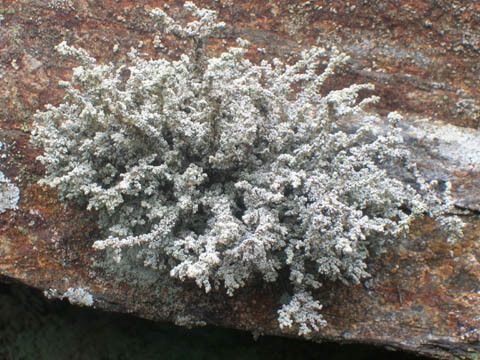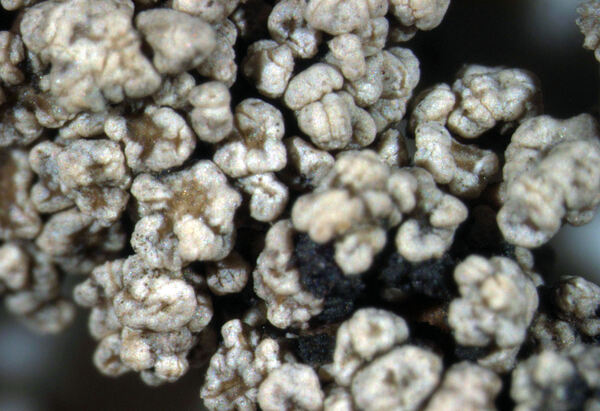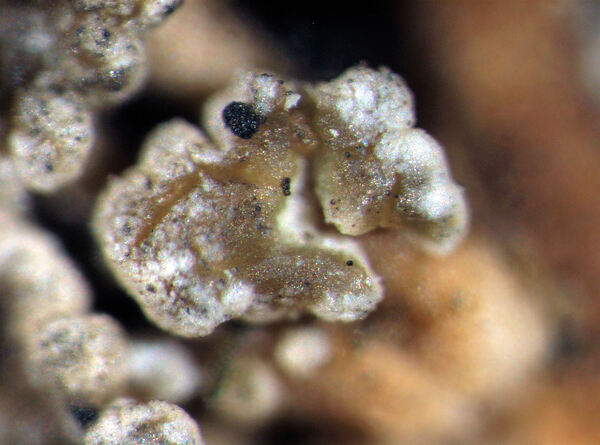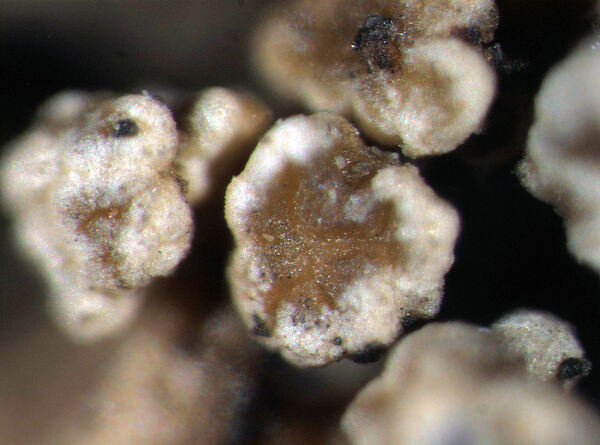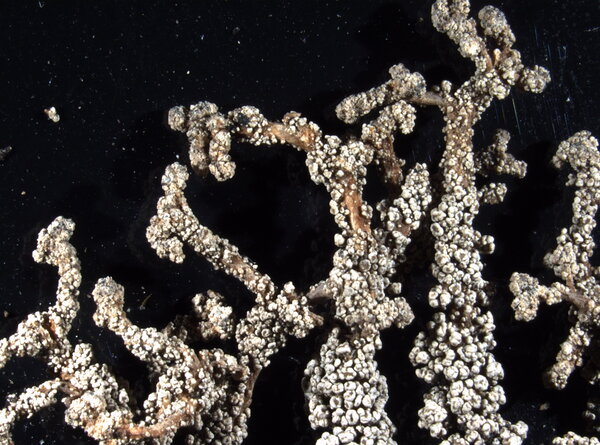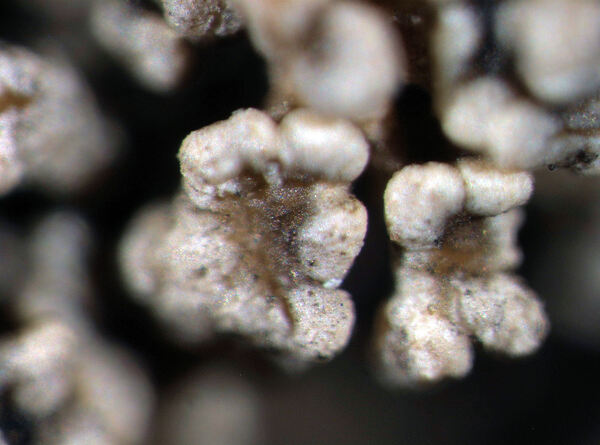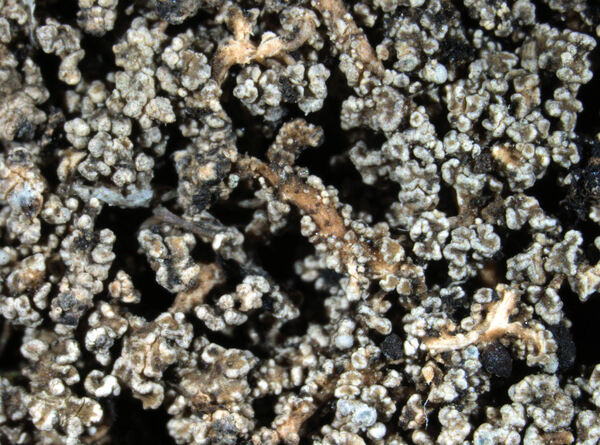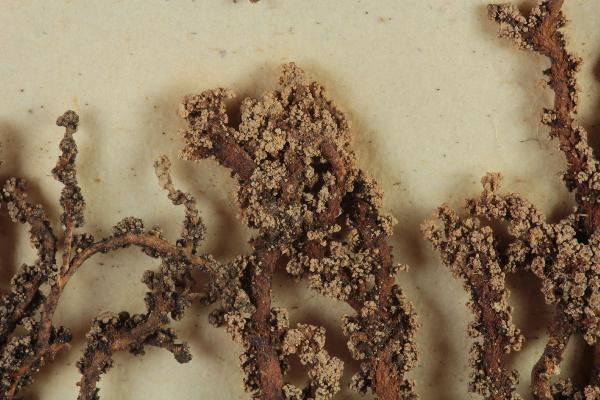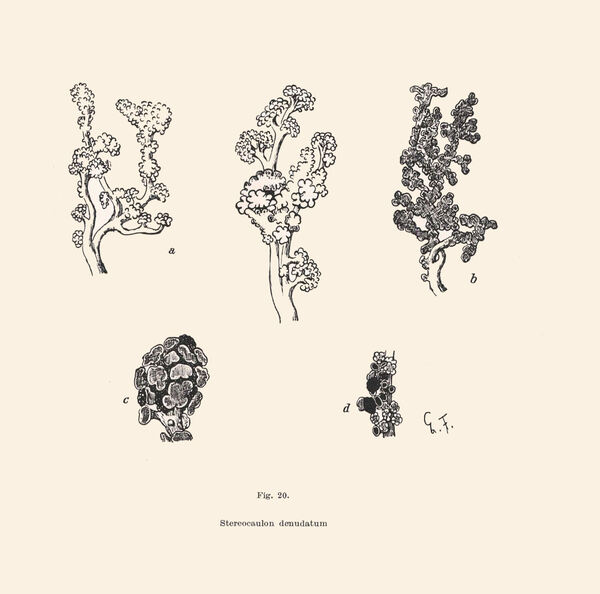Stereocaulon vesuvianum var. nodulosum (Wallr.) I.M. Lamb
in Poelt, Bestimmungss. europ. Flechten: 633, 1969.. Basionym: Patellaria paschalis var. nodulosa Wallr. - Fl. crypt. Germ., 1: 441, 1831.
Synonyms: Stereocaulon denudatum Flörke; Stereocaulon denudatum Flörke var. depressum H. Magn.; Stereocaulon vesuvianum Pers. f. depressum (H. Magn.) I.M. Lamb; Stereocaulon vesuvianum Pers. var. denudatum (Flörke) I.M. Lamb ex Poelt comb. inval.; Stereocaulon vesuvianum Pers. var. depressum (H. Magn.) I.M. Lamb
Distribution: N - Lomb (Ravera & al. 2022)
Description: Primary thallus crustose, ephemeral, usually absent in mature individuals, secondary thallus fruticose. Pseudopodetia loosely clustered, 1-4 cm tall, firmly attached, more or less caespitose, erect to decumbent, completely glabrous, whitish or greyish, dark at the base, branched in upper part, most often sorediate, with a solid cartilaginous axis of parallel hyphae surrounded by a lax medulla. Phyllocladia in most cases almost entirely covering the pseudopodetia, small, often verrucose, the largest ones peltate, flattened or concave, at least some of them with a dark olive-coloured central part and paler margins, partly confluent, forming plate-like squamules. Soralia globose, mostly terminal. Cephalodia rare, verruculose, dark olive brown, containing Stigonema. Apothecia very rare, 0.5.1 mm across, on lateral branches, with a dark brown disc. Paraphyses simple, slightly thickened above, with dark cap; hymenium and hypothecium colourless. Asci 8-spored, clavate to cylindrical, Porpidia-type. Ascospores 3-6-septate, hyaline, fusiform. Spot tests: thallus K+ yellow (rarely K+ yellow turning red), C-, KC-, P+ orange, UV-. Chemistry: atranorin, plus variable amounts of stictic and norstictic acids.
Note: a name used for morphs with glabrous podetia and partly confluent phyllocladia forming plate-like squamules, sorediate or not, most often found on metal-rich rocks; reported from both Hemispheres, including Europe, but not always distinguished; probably more widespread in the Alps, incl. the Italian Alps.
Growth form: Fruticose
Substrata: rocks
Photobiont: green algae other than Trentepohlia (primary); cyanobacteria, filamentous (e.g. Nostoc, Scytonema) (secundary, e.g. in cephalodia)
Reproductive strategy: mainly sexual
Species of metal-rich rocks
Poorly known taxon in need of further study
Commonnes-rarity: (info)
Alpine belt: absent
Subalpine belt: extremely rare
Oromediterranean belt: absent
Montane belt: extremely rare
Submediterranean belt: absent
Padanian area: absent
Humid submediterranean belt: absent
Humid mediterranean belt: absent
Dry mediterranean belt: absent
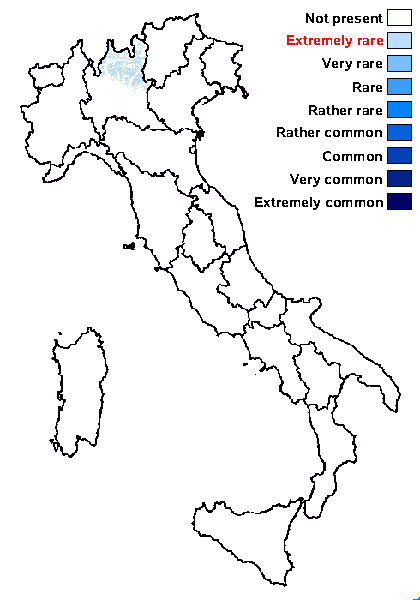
Predictive model
Herbarium samples
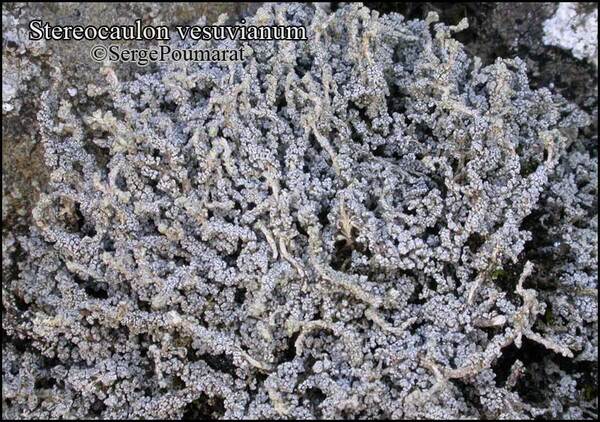
Courtesy Danièle et Olivier Gonnet - Source: https://www.afl-lichenologie.fr/Photos_AFL/Photos_AFL_S/Text_S/Stereocaulon_vesuvianum.htm
France, session AFL 2013 - Puy-de-Dôme
Growth form: Fruticose
Substrata: rocks
Photobiont: green algae other than Trentepohlia (primary); cyanobacteria, filamentous (e.g. Nostoc, Scytonema) (secundary, e.g. in cephalodia)
Reproductive strategy: mainly sexual
Species of metal-rich rocks
Poorly known taxon in need of further study
Commonnes-rarity: (info)
Alpine belt: absent
Subalpine belt: extremely rare
Oromediterranean belt: absent
Montane belt: extremely rare
Submediterranean belt: absent
Padanian area: absent
Humid submediterranean belt: absent
Humid mediterranean belt: absent
Dry mediterranean belt: absent

Predictive model
| Herbarium samples |

 INDEX FUNGORUM
INDEX FUNGORUM
 GBIF
GBIF
